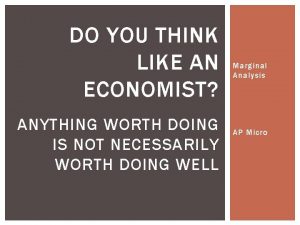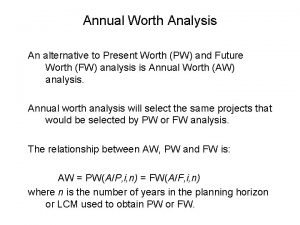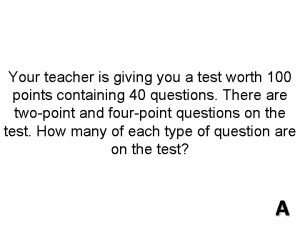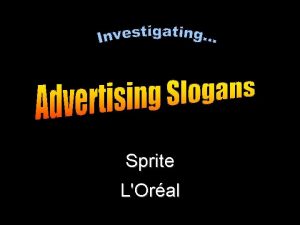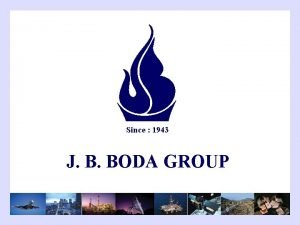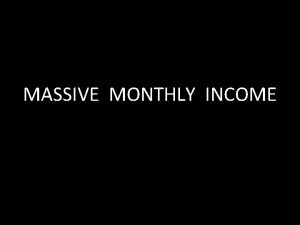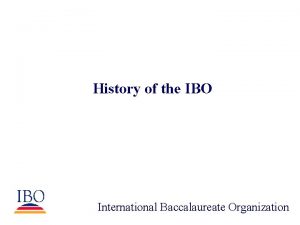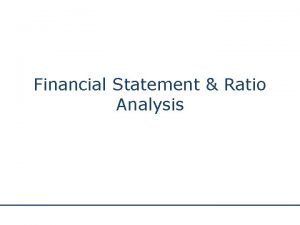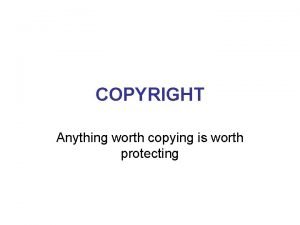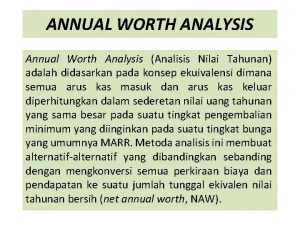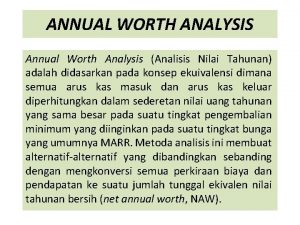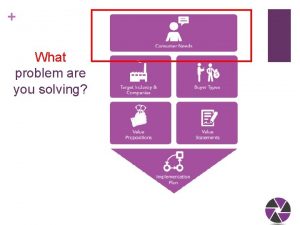What are you worth What are YOU worth































- Slides: 31

What are you worth?



What are YOU worth? $160 HKD 1251. 03

2. 1 Molecules to Metabolism • State the four most common elements found in living organisms • Describe the difference between organic and inorganic molecules • Describe examples of carbon compounds • Define metabolism • Describe how macromolecules are both built and broken down

Four most common elements in living organisms C H O N

Inorganic or organic? Organic compounds = carbon, contain C-H bonds Inorganic compounds = no carbon, no C-H bonds Exceptions… Carbon dioxide – has carbon but is inorganic (no C-H bond) Urea – has no C-H bond but is organic


Life is based on carbon compounds

Carbon compounds Other elements can be added to carbon to make complex 3 D molecules Rules? Carbon has 4 covalent bonds

Carbon compounds Carbohydrates Lipids Proteins Nucleic acids

Carbohydrates Carbon Hydrogen Oxygen 2 hydrogen: 1 oxygen These sugars can form pairs or long chains Some sugars join other molecules (e, g. deoxyribose)

Lipids Fatty acid tail Carbon Hydrogen Oxygen

Proteins Chain of amino acids (there are 20) Contain: carbon hydrogen oxygen nitrogen Some contain: sulphur

General structure of an amino acid

Nucleic acids Chains of nucleotides Carbon Hydrogen Oxygen Nitrogen Phosphorus e. g. RNA DNA

“Drawing molecular diagrams of glucose, ribose, a saturated fatty acid and a generalised amino acid” 20 seconds to look Draw using pencil Correct any mistakes

Glucose

Ribose

Saturated Fatty Acid

Amino Acid

Functional Groups Draw the structure of the functional groups on page 65

Identify the molecule Are the molecules amino acids, lipids or carbohydrates? Highlight any functional groups you can find Complete the worksheet

Identify the molecule Carbohydrate (Ribose)

Identify the molecule Lipid (Stearic acid)

Identify the molecule Lipid (Triglyceride)

Identify the molecule Amino acid

Type of metabolism Anabolism Catabolism Page 67 What is it? What happens to the energy?

Metabolism Sum of all enzyme catalysed reactions in an organism (both intra and extracellular) A number of pathways – one molecule is transformed into another in a series of small steps - Anabolism - Catabolism

Anabolism Build up larger molecules from smaller ones Require energy (ATP) Form macromolecules from monomers

Catabolism Larger molecules broken down into smaller ones Release energy – re-used in the cell Macromolecules into monomers
 Insidan region jh
Insidan region jh Anything worth doing is not necessarily worth doing well
Anything worth doing is not necessarily worth doing well Annual worth method
Annual worth method Annual worth analysis example
Annual worth analysis example One night a theater sold 548
One night a theater sold 548 Sprite slogans
Sprite slogans Rain
Rain Agree or disagree questions about life
Agree or disagree questions about life If you think you can you can poem
If you think you can you can poem Tell me what you eat and i shall tell you what you are
Tell me what you eat and i shall tell you what you are I will follow you wherever he may go
I will follow you wherever he may go Was magellan worth defending?
Was magellan worth defending? What is a vue vip seat
What is a vue vip seat Tower 55 fort worth
Tower 55 fort worth Diosdado banatao net worth
Diosdado banatao net worth Mkleo net worth
Mkleo net worth Degree of financial leverage formula
Degree of financial leverage formula Jb boda insurance brokers pvt ltd
Jb boda insurance brokers pvt ltd T harv eker net worth
T harv eker net worth Rumus present worth
Rumus present worth Cnm dallas
Cnm dallas Els worth bunker
Els worth bunker Capturing marketing insights
Capturing marketing insights List the steps in the paced decision making process
List the steps in the paced decision making process Andrew weinreich net worth
Andrew weinreich net worth Nas jrb fort worth pharmacy
Nas jrb fort worth pharmacy Matt bacak
Matt bacak Tangible net worth
Tangible net worth There nothing worth more
There nothing worth more John goormaghtigh nationality
John goormaghtigh nationality Code compliance fort worth
Code compliance fort worth Financial analysis assessment
Financial analysis assessment

